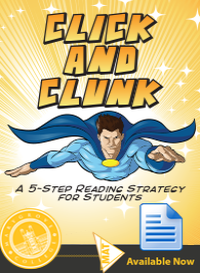Why don’t our students love to read? Well, use your imagination and pretend you’re a student. You’ve only been reading for seven to twelve years—and most of what you’ve read has been assigned and tested. In addition to this, you’ve been asked to “discuss” and “close read” texts, create book reports, and answer comprehension questions based upon what you read. Sounds like a blast, huh?
These are only a few reasons why our students dislike reading, but rather than fixate on all the reasons our reluctant readers are reluctant, we’d like to suggest 10 simple ways reading teachers can drum up excitement for books!
Drumming Up Excitement for Books: 10 Tips for Reading Teachers
- Niche book clubs are popular amongst adults, but why not start one (or two, or three) for students? How about a club that only reads scary and disgusting books? Or one that reads only sci-fi books with leading female characters? If each group only meets monthly (or bi-monthly), reading teachers should have plenty of time to keep up.
- Instead of talking about good books, reading teachers might have more luck if they showed students good books. Stop by Scholastic’s site where you’ll find a nice collection of book trailers for K-8 students.
- If you are reading a work of historical fiction, contact local re-enactor groups at historical sites in your area and invite them to visit your classroom.
- The Internet may list every book that was ever written, but how do reading teachers help students sort through the clutter and find books they love? Answer: They teach them how to use book recommendation websites.
- At our school, students can sign up for a half hour research consultation with a librarian. This is a one-on-one session in which students collaborate with librarians to flesh out their topics and find useful books and articles that relate to their topics.
- Students and teachers both found this service to be beneficial—which got us thinking: What if we took the “research consultation” model and used it to create a “good book” consultation service where students pair up with a librarian to find books they’ll enjoy? Many students take advantage of this service and continue to be enthusiastic about it.
- Show foreign films or watch movies with closed-captioning turned on. As many of us know, finding creative ways to focus reluctant readers on books, the very thing that evokes feelings of frustration, inadequacy and failure, is challenging. But films can capture students’ interest and stimulate their imagination in ways that books can’t.
- One of our favorite things about visiting book stores is stopping by the “recommended reading” station. Every month, the bookstore employees select their favorite books and write up a short paragraph explaining why they made their selections. Try doing this with your students.
- Invite the librarian to visit the classroom every month to talk about new arrivals and seasonal favorites.
- Use Skype in the Classroom to connect with a real published author for free! Currently, you can Skype with Nancy Krulik, author of George Brown; Gayle Forman, author of If I Stay and Where She Went; Jane Kohuth, author of Duck Sock Hop!; C. Alexander London, author of An Accidental Adventure!; and many, many more published authors.
- Subscribe to Children’s Books, a podcast series featured on The Guardian’s website.Every month features a new leading children's book author.
Photo credit: Vladimir Morozov / Foter / Creative Commons Attribution 2.0 Generic (CC BY 2.0)

© 2025 Created by Steve Hargadon.
Powered by
![]()